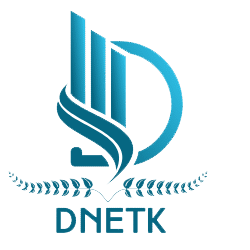In the anatomy of a living organism, the central nervous system is paramount. It receives sensory input, processes the information, and coordinates the activity of all other systems to produce a unified, responsive, and efficient being. For the modern business, an Enterprise Resource Planning (ERP) system serves this exact purpose. It is the digital central nervous system that integrates disparate functions—from finance and human resources to supply chain and customer relations—into a single, coherent, and intelligent whole.
Gone are the days when ERP was merely a back-office accounting tool for massive multinational corporations. Today, it is a strategic imperative for businesses of all sizes, a transformative force that dismantles data silos, automates complex processes, and provides the real-time visibility necessary to thrive in a volatile, competitive landscape. The transformation wrought by a successfully implemented ERP system is profound, touching every facet of an organization’s operations and strategy.
From Disconnected Silos to a Single Source of Truth
Before the advent of integrated ERP systems, the typical business operated as a collection of fragmented departments, each with its own software and data repository. The sales team used a customer relationship management (CRM) system, the warehouse operated on an inventory management spreadsheet, finance relied on a general ledger software, and manufacturing followed production schedules on a whiteboard. These were information silos, and their existence created a cascade of inefficiencies.
Imagine a scenario: Sales closes a large deal with a key client. They log it in their CRM. However, without integration, the warehouse remains unaware of the impending surge in demand. Finance doesn’t know to expect a large invoice, and production hasn’t adjusted its schedule. The result? The warehouse runs out of stock, leading to delayed shipments and a frustrated customer. Finance is caught off guard by the cash flow implications, and production is forced into costly overtime. The sales team’s triumph turns into an operational nightmare due to a simple lack of communication between systems.
An ERP system shatters these silos. It creates a unified database—a single source of truth—that every department accesses. When the sales order is entered, it automatically triggers a cascade of events across the system: inventory levels are updated, a pick list is generated in the warehouse, an invoice is created in finance, and the production schedule is adjusted in real-time. This seamless flow of information eliminates redundant data entry, drastically reduces errors, and ensures that every part of the organization is working with the same, up-to-date information. The transformation is from reactive chaos to proactive, coordinated action.
Supercharging Operational Efficiency and Automation
At its core, ERP is an engine of efficiency. By integrating business processes, it identifies and automates tedious, manual tasks that consume valuable employee time and are prone to human error. Consider the procure-to-pay process. Without ERP, it might involve manually creating purchase orders, printing them, getting signatures, sending them via email or fax, manually matching them with incoming invoices and packing slips, and then keying the data into an accounting system.
An ERP system automates this entire workflow. An employee’s requisition can be automatically routed for electronic approval based on predefined rules. Once approved, the system generates and sends the PO to the supplier electronically. When the goods arrive, the system can match the PO, invoice, and receipt automatically, flagging any discrepancies for human review. Finally, it can schedule the payment. What was once a days-long process involving multiple people and departments becomes a streamlined, touchless operation that takes hours.
This automation extends across the business:
- Finance: Automated invoicing, recurring payments, and financial reporting.
- HR: Automated payroll processing, benefits administration, and employee onboarding checklists.
- Manufacturing: Automated production scheduling, quality management, and material requirements planning (MRP).
- Supply Chain: Automated demand forecasting, inventory replenishment, and logistics management.
The result is a dramatic reduction in operational costs, faster cycle times, and employees freed from mundane tasks to focus on higher-value, strategic work that drives innovation and growth.
Empowering Data-Driven Decision Making
In the pre-ERP era, business intelligence was often a retrospective, labor-intensive effort. Managers would request reports from IT, who would then spend days or weeks extracting data from various systems, consolidating it into spreadsheets, and attempting to create a coherent picture. By the time the report was ready, the data was often stale, and the business opportunity or problem had already evolved.
Modern ERP systems have powerful, built-in analytics and reporting tools. Because all data resides in a single repository, generating reports is instantaneous. Executives can move from asking, “What were our sales in the Western region last quarter?” to interactive, real-time questions like, “How are our current promotions impacting profitability for high-value customers in the Western region, and what is the corresponding effect on inventory levels for our top three products?”
This is the transformation from gut-feeling decision-making to data-driven strategy. ERP systems provide customizable dashboards that give every level of the organization the key performance indicators (KPIs) they need. The CEO can see a holistic view of the company’s financial health, while a supply chain manager can monitor on-time delivery rates and inventory turnover. This real-time visibility allows businesses to be agile—to spot trends early, identify bottlenecks before they become crises, and capitalize on opportunities faster than the competition.
Enhancing Customer Relationship Management (CRM)
While dedicated CRM platforms exist, their integration within a broader ERP system creates a powerful synergy that significantly enhances the customer experience. When sales, service, and financial data are connected, a 360-degree view of the customer emerges.
A customer service representative can see not only the customer’s support ticket history but also their complete order history, payment status, and any ongoing contracts. This empowers them to resolve issues quickly and knowledgeably. The sales team can identify upselling and cross-selling opportunities based on a customer’s past purchases and payment reliability. Marketing can segment audiences with precision, targeting customers who have shown interest in specific product lines.
This integrated approach transforms customer interactions from transactional encounters into strategic relationships. It leads to higher customer satisfaction, increased loyalty, and ultimately, greater customer lifetime value. The business is no longer just selling a product; it is delivering a seamless, informed, and personalized experience.
Ensuring Regulatory Compliance and Mitigating Risk
For businesses in highly regulated industries like pharmaceuticals, food and beverage, or finance, compliance is non-negotiable. ERP systems are invaluable tools for managing this complexity. They can enforce standardized processes that adhere to regulations such as GDPR, Sarbanes-Oxley (SOX), or industry-specific standards.
An ERP can automatically maintain detailed audit trails, tracking every change made to financial data or sensitive records. It can manage the documentation required for lot traceability in manufacturing, allowing a company to quickly trace a faulty component from a finished good back to its raw material source and every point in between. This capability is crucial for managing recalls and protecting public safety.
Furthermore, by providing greater visibility into the entire supply chain and financial operations, ERP systems help mitigate risk. Companies can monitor supplier performance to avoid disruptions, track internal controls to prevent fraud, and use accurate forecasting to hedge against market volatility. The transformation here is from a posture of reactive compliance to one of proactive risk management.
The Modern Evolution: Cloud, AI, and IoT
The transformative power of ERP has been supercharged by technological advancements, primarily the shift to cloud-based solutions. Traditional, on-premise ERP systems required massive upfront investment in hardware and IT infrastructure, along with complex, lengthy implementations. Cloud ERP, offered on a Software-as-a-Service (SaaS) model, has democratized access. Businesses can now subscribe to powerful ERP functionality with lower initial costs, faster deployment, automatic updates, and the flexibility to scale up or down as needed.
Moreover, next-generation ERP systems are increasingly infused with Artificial Intelligence (AI) and Machine Learning (ML). They are moving beyond automation to predictive and prescriptive analytics. An AI-powered ERP can:
- Predict machine failure in a factory, prompting pre-emptive maintenance.
- Forecast demand with unprecedented accuracy by analyzing internal data and external market signals.
- Automatically suggest optimal inventory levels to minimize carrying costs while avoiding stockouts.
- Identify anomalous transactions that could indicate fraud.
The Internet of Things (IoT) further extends the ERP’s reach. Sensors on equipment can feed real-time performance data directly into the ERP, creating a living, breathing digital twin of the physical operation. This convergence of ERP, AI, and IoT is creating a new class of “intelligent enterprises” that are not just efficient but also predictive and self-optimizing.
The Human Element: A Cultural Transformation
It is crucial to acknowledge that an ERP implementation is not merely a technical project; it is a profound organizational and cultural change. The success of the transformation hinges on people. Employees must be trained on the new system, and often, long-standing workflows must be re-engineered to align with the software’s best practices. Resistance to change is the single biggest reason for ERP project failures.
Therefore, a successful transformation requires strong leadership, clear communication, and extensive change management. When done correctly, the result is not just a more efficient company but a more empowered workforce. Employees gain access to the information they need to do their jobs better, collaboration across departments increases, and a culture of continuous improvement takes root.
Conclusion
The implementation of an ERP system is a strategic journey, one that requires significant investment, planning, and commitment. However, the rewards are transformative. By integrating siloed departments, automating core processes, and providing a foundation for data-driven intelligence, ERP software elevates a business from a collection of disjointed parts into a unified, agile, and intelligent organism. It is the indispensable digital backbone that allows modern businesses to optimize their present operations while strategically navigating the complexities of the future. In an era defined by data, speed, and connectivity, an ERP system is no longer a luxury—it is the central nervous system for sustainable competitive

